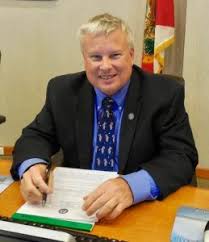Dale Martin
City Manager
Fernandina Beach
August 3, 2018 12:00 p.m.

With the tentative millage rate now confirmed by the City Commission, the revenue side of the proposed 2018/2019 budget comes into clearer focus. The revenues that support the budget are often overlooked, as the predominant questions are typically related to on what the money is being spent.
The General Fund, to re-emphasize, is the primary source of operations for the City. The General Fund supports most of the personnel and projects that residents associate with city government: public safety (not only fire and police services, but also building and code enforcement), parks and recreation, streets, and planning). The two notable exceptions most commonly associated with city services, water and wastewater services, are not part of the General Fund (but do provide significant financial support to the General Fund).
The revenue foundation of the General Fund is local property taxes, but other sources of revenue contribute to the General Fund. These additional sources of revenue include county, state, and federal grants, franchise fees, other non-city taxes, and other fees and fines. When all sources of revenue are considered, local property taxes provide about 65% of the funding of the General Fund.
The property tax revenue is based upon two factors: the value of property and the millage rate. The taxable value of all property in the City has reached a new high: $2,196,470,713. This value now exceeds the previous high of $2,044,451,517 reached in 2007/2008. The 2018/2019 value reflects an 8.8% increase in total taxable value, but, when previous values are compared to current values (in other words, remove from consideration new construction and other additions to the tax rolls), the increase falls slightly to 6.7%. It is very clear that property values continue to rise in Fernandina Beach.
The millage rate (tax levy) is measured in (no surprise) “mills.” A mill is equivalent to $1 for every $1,000 of taxable value. The taxable value of property can be substantially different than the “just” (or market) value. For example, my residential property, as determined by the Property Appraiser, has a just value of approximately $300,000. The taxable value, however, is only about $250,000. This difference is due to two primary factors related to “homesteading,” or the primary use of my property as my principal residence.
While the market value can rise (or fall) based upon market conditions and the professional expertise of the Property Appraiser, the final taxable value is constrained by provisions to the State Constitution. These constraints can lead to significant differences in value which are often not understood. Most notably, residents that have remained in the same homesteaded property for many years have a taxable value that is minimal in relation to residents that have recently moved into a different house (not necessarily a newly constructed house).
Again citing my own situation, since I have only occupied my home for roughly three years, my taxable value is still somewhat close to the market value. As a result, my City tax bill is approximately $1,500. I pay a similar amount to both Nassau County and the Nassau County Schools. Many (actually most) residents have lived in their homes longer than I have, so the impact of their lengthy tenure is much more evident. Some homes with a market value similar to or higher than my home pay significantly less in City, County, and School taxes.
The City has approximately 9,600 parcels of real property. The median amount paid for City taxes of those parcels is $750, half of my City tax bill. In fact, approximately 14% of the 9,600 parcels pay $0 for City property taxes. Another 3% pays less than $100. For those interested in the other extreme, the highest residential tax bill exceeds $23,000, but less than 500 properties (of the 9,600) pay more than $3,000 in City taxes.
I have no complaints with the amount of taxes that I pay for City services- I believe that it is a great value. The City budget indicates that roughly 25% of the General Fund expenditures are related to police services. This means that for about $400, or a little over a dollar per day, I have twenty-four hour/seven day year round police protection.’
The growing challenge is that someone else gets those same services also for 25% of his or her tax bill. If the tax bill is only $750, that same police protection is now about $0.50 per day. As the constraints (well-meaning) continue to effect taxable values, the municipal budget challenge will be how to equitable fund City services (garbage services are funded through fees that are not based upon taxable values, so the costs are more equally distributed).
Budgets are an exciting challenge, and I look forward to completing next year’s budget and getting to work on the projects included in that document.

Thanks for the heads up on taxation in your beautiful town. We came to northern Florida to visit St Augustine, but by accident, discovered Fernandina Beach. Absolutely love your pristine village.